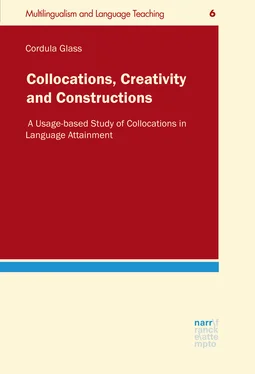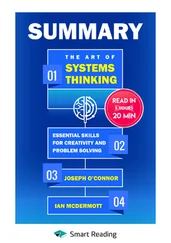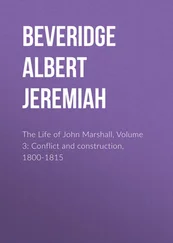1 ...7 8 9 11 12 13 ...19 One of the first authors within collocational research to explicitly advocate for this mutual influence between the constituents of a collocation is Dirk Siepmann (2005: 427). In his evaluation of linguistic co-occurrences, he not only takes into account that a word might be interrelated with a more abstract semantic concept but also that semantic concepts as such could frequently be observed together. He comes to the conclusion that “[…] collocational phenomena span the entire range of morphosyntactic constructions. The terms ‘collocation’ and ‘construction’ turn out to be almost synonymous, a clear indication of the fact that phraseology is at the centre of language rather than at the periphery.” (Siepmann 2005: 430). Taking into account that Firth (> 2.1) and Palmer (> 2.2) also more or less implicitly considered collocations as a pairing of selectional restrictions of form and meaning, this is a rather obvious conclusion to make. What is innovative here are the grounds on which a constructional meaning can be based. Collocations with semantically rather vague words like do or make as in do work or make a remark are particularly difficult to grasp, even if it is possible to find a definition for the meaning of the [NP] in [ do +NP] this is often hard to maintain throughout all instances of a corpus let alone native speakers’ performances (Faulhaber 2011: 304–309). Any semantic explanation of a slot within a construction in general and collocations, in particular, can therefore only be a prototypical approximation. Nevertheless, knowing about these potential restrictions comes naturally to a native speaker and is valuable information for the L2 learner, or as Siepmann stresses “[h]owever, although semantic relationships can only be discerned post hoc, we should not forget that they may lighten the language learner’s task.” (Spiemann 2005: 432)
Thus, the basic assumptions of significance-oriented approaches can be seen as follows: overall, these approaches revolve around the question of the reasons why a combination of words should be regarded as a collocation. They therefore, operate on a syntagmatic as well as a paradigmatic level but focus on a collocation’s restrictions as far as these two dimensions are concerned. Syntagmatic restrictions often come in the shape of a more confined meaning of the collocation itself, since in most cases it is rather specific and does not encompass the full semantic and/or functional spectrum of the individual lexical items, which constitute this co-occurrence. This has been accounted for as (non)compositionality or semantic opaqueness . Paradigmatic restrictions, on the other hand, are combinatorial restrictions. They describe the fact that constituents of a collocation cannot be exchanged deliberately, even if they are substituted by close synonyms. The actual degree of these constraints can vary considerably, and often results in a vague and, at times, subjective subdivision of the continuum between compound, collocation and free combination. In significance-oriented publications, these restrictions have been labelled variability or unpredictability . Furthermore, collocations can be subdivided into fully lexicalized and partly delexicalised structures. The latter are clustered, based on the identification of a joint underlying meaning and/or function dimension. They are multi-directional, which means that each part could be regarded as an influencing factor for the other. The issue of the syntagmatic and paradigmatic restrictedness of a collocation in partticular poses problems for any kind of contrastive application, such as translation or foreign language learning.
2.3 A Construction-Oriented Approach
In comparison, context- as well as significance-oriented approaches share the view of a collocation being formed by syntagmatic and paradigmatic levels of meaning. This links in with construction grammar, which assumes that any (recurrent) structure within a linguistic system consists of a level of form but also a designated meaning perspective (> 4). Therefore, it will be argued here that collocations, like morphemes or words, are in fact form and meaning pairings and as such constructions in a construction grammar sense.
To favour an approach from chapters 2.1 or 2.2 for a working definition, however, does not seem possible, since neither statistically-oriented methodology nor a lexicographic list of a word combination’s restrictions are, at this point, able to provide a comprehensive definition of collocational phenomena. As chapter 2.2 has shown, paradigmatic restrictions are particularly difficult to explain, since whenever there is a definition which seems to have grasped the exact nature of limited variability, an example can be found which proves the previous interpretation to be a misconception. Take, for instance, the often quoted word combination commit a crime . In terms of a limitation of interchangeability, commit as a collocate can be found with noun phrases such as adultery , burglary , crime , deed , error , impropriety , indiscretion , mistake , murder , offence , robbery , sin or suicide (OCD 2: commit ). Semantically, all these potential collocates seem to have in common that they roughly-speaking refer to an offence for which one can or will be held accountable by some kind of authority. Yet, lie , which is semantically close to nouns mentioned above such as perjury, does not occur with commit either within the BoE or the BNC. Furthermore, even native speakers of English seem to reject the combination commit a lie as being wrong (Klotz 1998: 93–95). Examples like this have often lead to an understanding of collocations as an idiosyncratic and more or less item-specific combination of lexical items (Herbst 1996; Hausmann 1984). But since collocations are regarded as constructions here, a construction grammar approach with the concept of inheritance relations at its centre might help us to understand this problem. Commit a lie , for example, is not completely non-existent within the English language. It can be found whenever a text or, to be more precise, its author, thinks that lying is not just something one does on a regular basis, but is in fact a kind of crime, which consequently will be judged by a moral authority. This is often the case in religious discourse, and therefore it seems that [ commit +NP] does actually maintain its basic meaning. Of course, commit a lie and the more accepted commit perjury are far from being synonymous. Even though both express an act of not telling the truth, perjury is restricted to the language of the law. So, if commit perjury is more likely to be found in a corpus, this might be due to the fact that in a rather secular world, a legally “proper” crime like perjury is much more noteworthy than an ordinary lie , but not because commit a lie is not a possible combination.
The potentially underlying meaning of “an offence, for which one can or will be held accountable by some kind of authority” becomes even stronger after a closer look at collocations like commit an impropriety or commit a mistake . At first glance, it seems that neither the aspect of “offence” nor the feature of “accountability” are particularly strong within these word combinations. Under closer examination, however, it becomes apparent from examples (9) to (11) that, on the contrary, each impropriety or mistake is a somewhat euphemistic expression for a serious offence if it co-occurs with the verb commit . The printers in (9), for example, were severely punished by King Charles I for their seemingly blasphemous behaviour, while the mistakes in (10) are nothing less than kidnapping and charges for acting as an accessory to assault1. Finally, the impropriety in example (11) is in legal terms a serious offence which usually is brought in front of a High Court and is therefore anything but a minor procedural lapse.
Читать дальше








![Chade-Meng Tan - Search Inside Yourself - Increase Productivity, Creativity and Happiness [ePub edition]](/books/703803/chade-thumb.webp)



